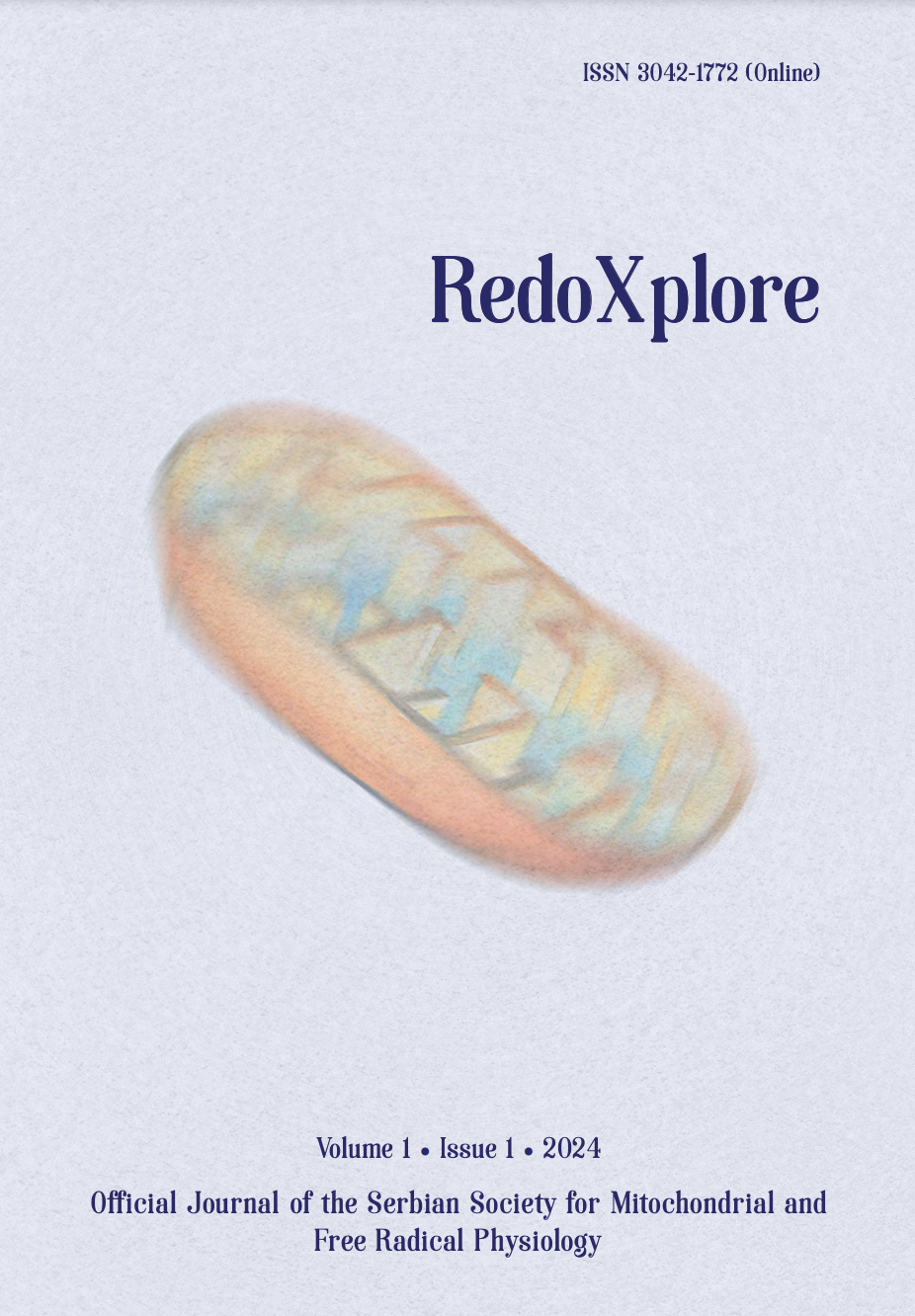
More articles from Volume 1, Issue 1, 2024
REDOX AND METABOLIC REPROGRAMMING OF BREAST CANCER CELLS AND ASSOCIATED ADIPOSE TISSUE - THE CORNERSTONES OF ADAPTIVE TUMOUR BEHAVIOUR
INSULIN MODULATES MITOCHONDRIAL STRUCTURAL AND FUNCTIONAL MOSAICISM IN BROWN ADIPOCYTES
NITRITE MITIGATES OXIDATIVE BURST IN ISCHEMIA/REPERFUSION IN BRAIN SLICES
NITRIC OXIDE, SUPEROXIDE AND PEROXYNITRITE – REDOX REGULATION OF THE CARDIOVASCULAR SYSTEM BY NITRO-OXIDATIVE STRESS AND S-NITROS(YL)ATION
DIETARY NITRATE AS PIVOT ON THE GUT MICROBIOTA-HOST REDOX COMMUNICATION
MITOCHONDRIAL TARGETING AS A MEANS OF OVERCOMING CANCER DRUG RESISTANCE
Sabancı University , Istanbul , Turkey
Sabancı University , Istanbul , Turkey
Sabancı University , Istanbul , Turkey
Sabancı University , Istanbul , Turkey
Sabancı University , Istanbul , Turkey
Sabancı University , Istanbul , Turkey
Sabancı University , Istanbul , Turkey
Pompeu Fabra University , Barcelona , Spain
Pompeu Fabra University , Barcelona , Spain
Editor: Bato Korac
Published: 29.08.2024.
Selected oral presentations
Volume 1, Issue 1 (2024)
Abstract
Our recent observations show that both resistant and stem-like cancer cells predominantly responsible for metastasis differ from chemotherapy-sensitive cells. We have shown bioinformatically and experimentally that mitochondria of such cells are much more prone to oxidative phosphorylation (OXPHOS) than radio- or chemotherapy-sensitive cancer cells from which they evolved during therapeutic interventions. Specifically, in triple-negative breast cancer models, we observed that such resistant cells exhibit higher mitochondrial membrane potential, higher OXPHOS and respiration, and increased resistance to oxidative stress, allowing them to survive chemo-radiotherapy. These findings of increased expression of OXPHOS-associated genes and proteins in chemoresistant cells and biopsies of relapsed tumors suggest an alternative druggable target. Our in vitro and in vivo (nude mice and Artemia salina) data suggest that certain antibiotics, inducers of mitochondrial dysfunction, create additive oxidative stress and can reduce the growth rate of tumors developed from resistant or stem-like cancer cells. Such repurposed drugs, selected from a chemical library, are also able to resensitize resistant tumors, allowing reuse of chemotherapeutic agents. In addition, their modification with a specific moiety (TPP) allows for increased delivery to mitochondria to reduce cytotoxic pressure on normal cells. Thus, research from our laboratory offers an alternative strategy for anticancer therapy of resistant tumors.
Citation
Copyright

This work is licensed under a Creative Commons Attribution-NonCommercial-ShareAlike 4.0 International License.
Article metrics
The statements, opinions and data contained in the journal are solely those of the individual authors and contributors and not of the publisher and the editor(s). We stay neutral with regard to jurisdictional claims in published maps and institutional affiliations.






